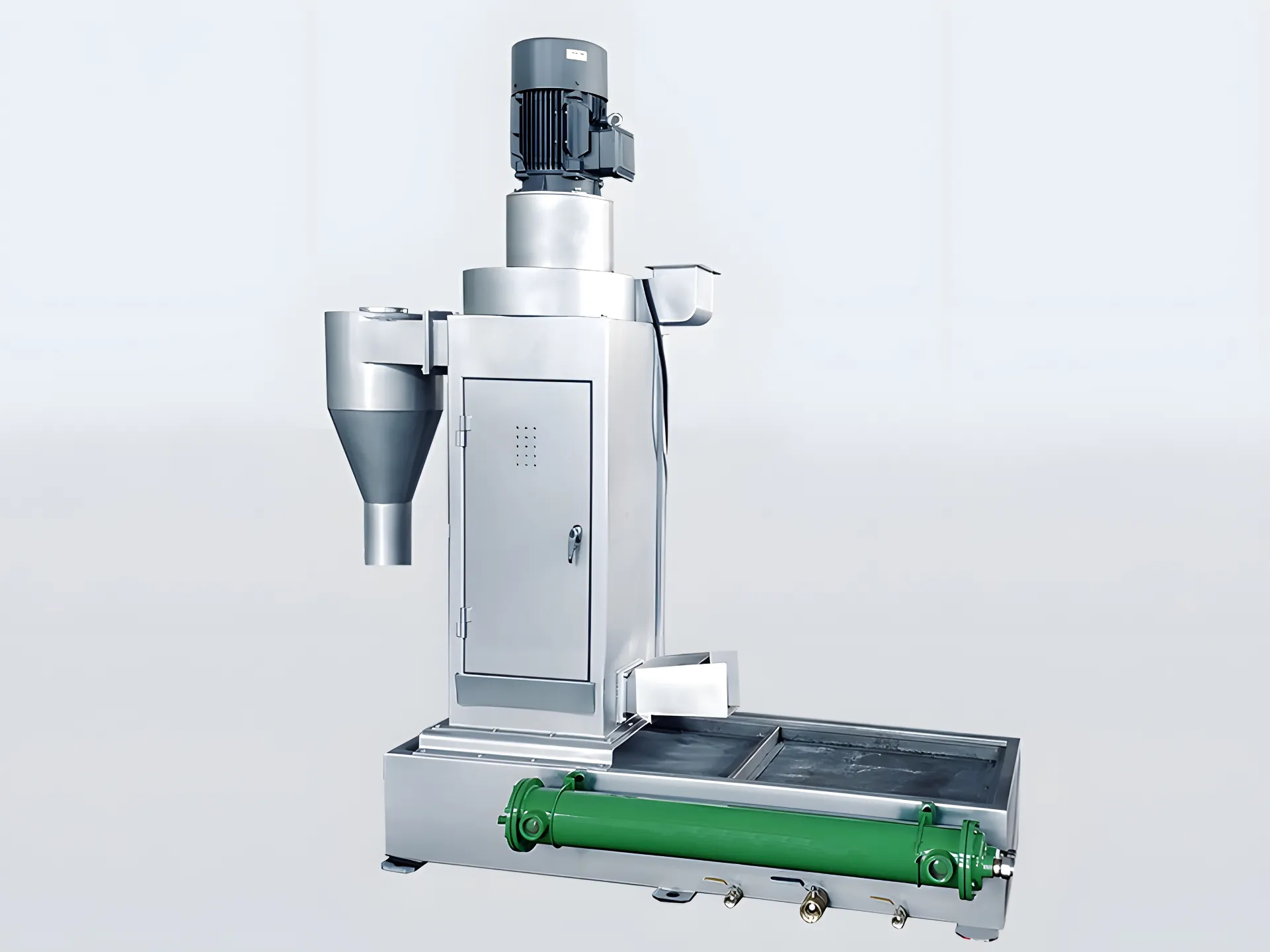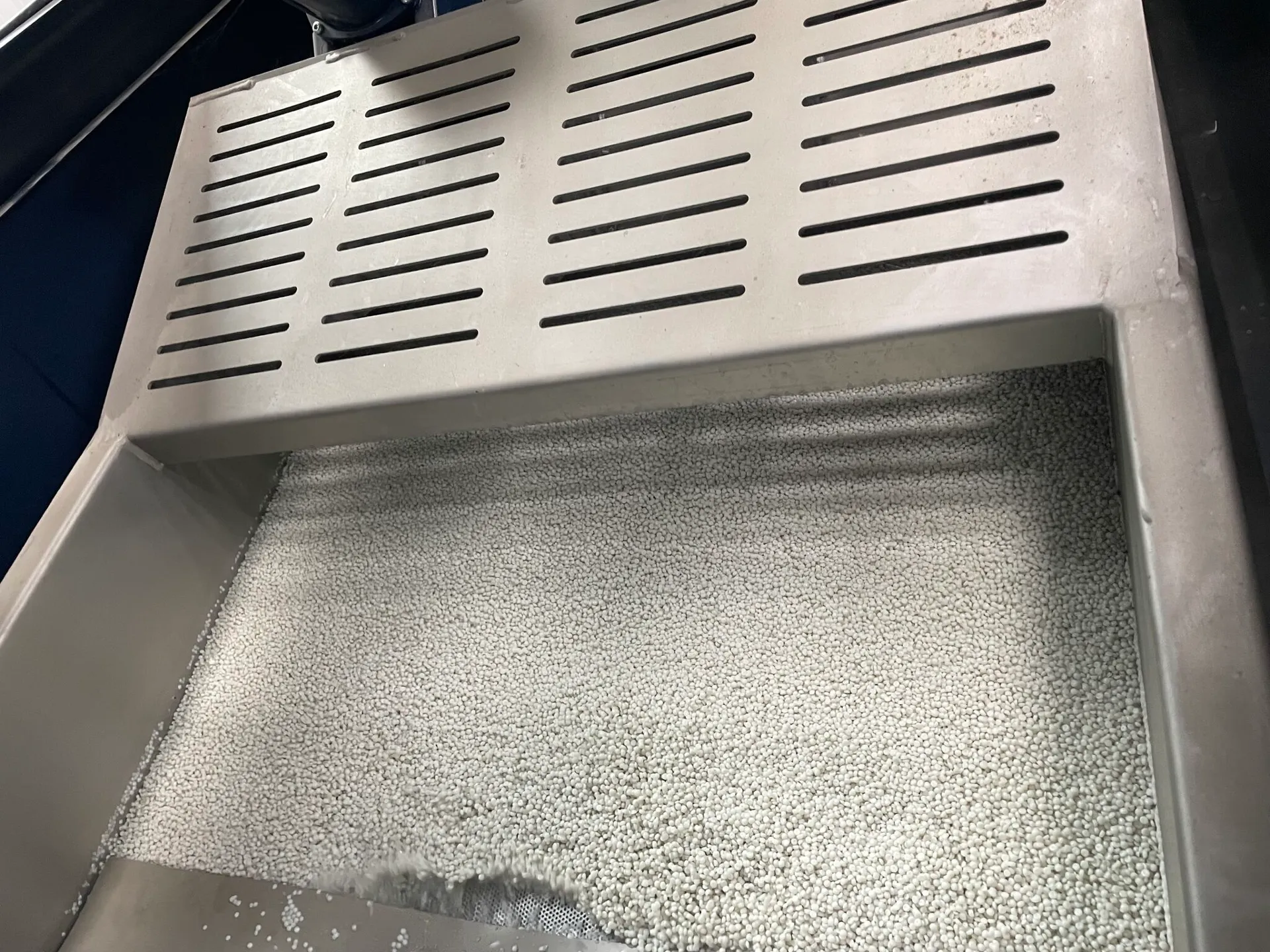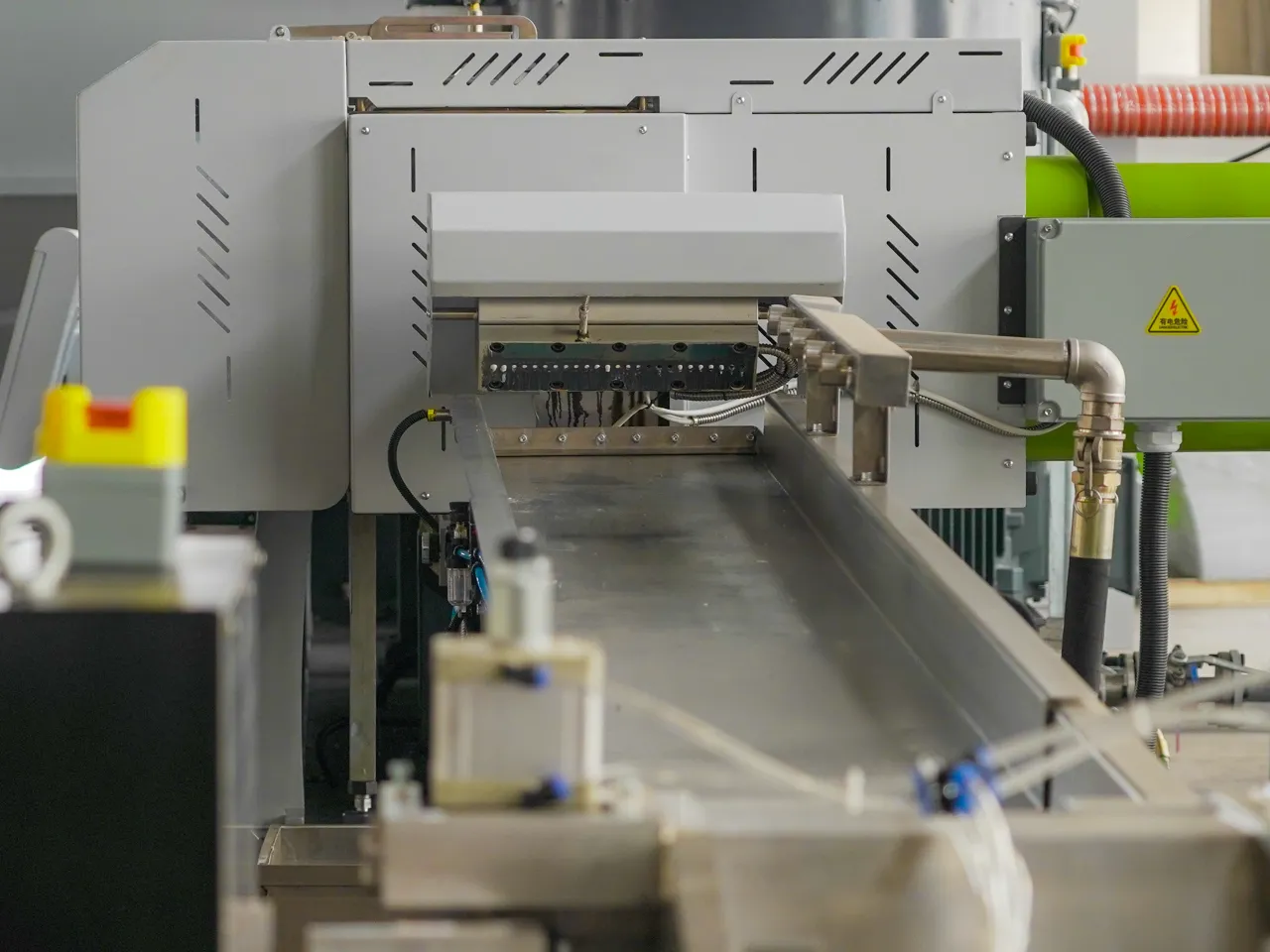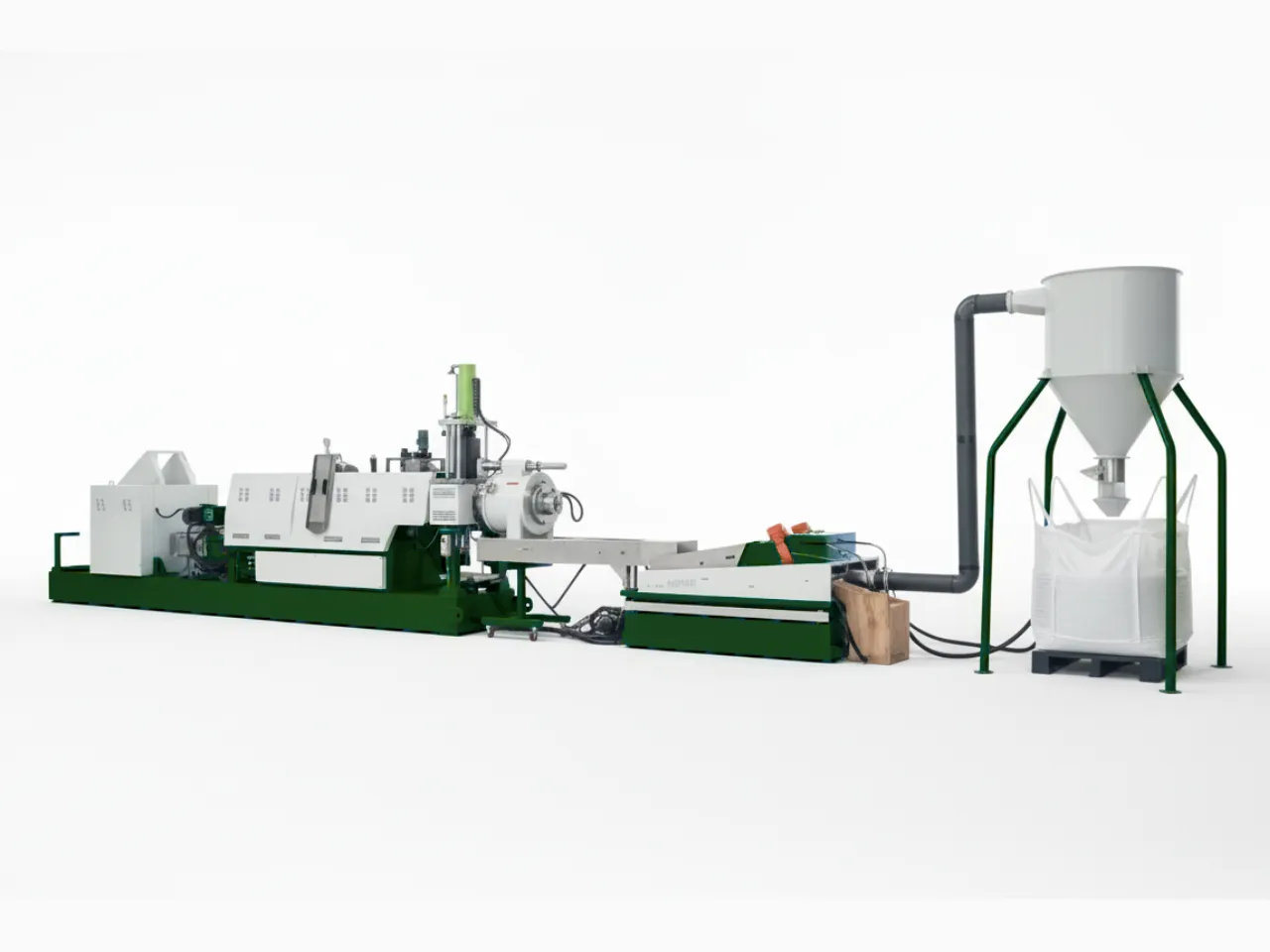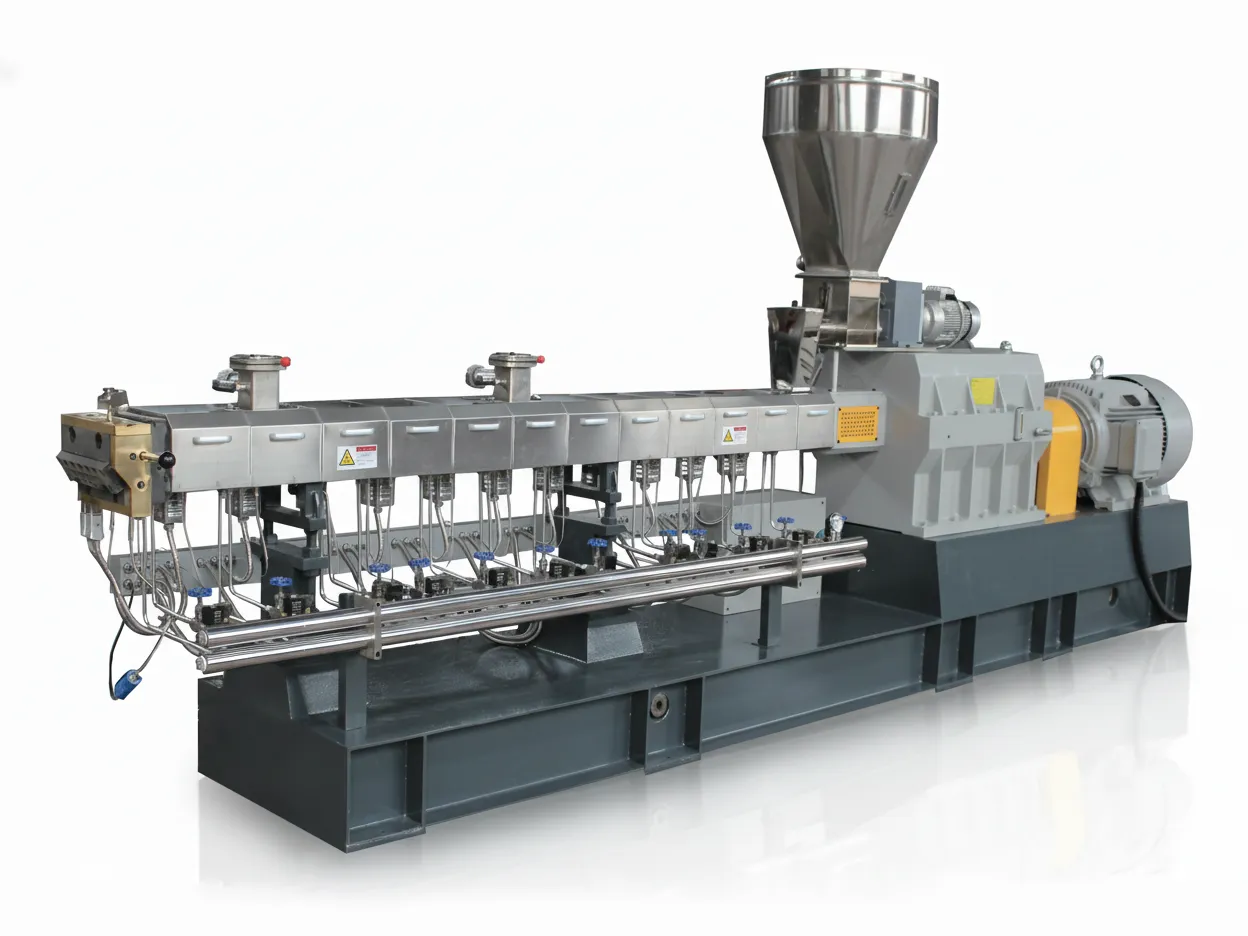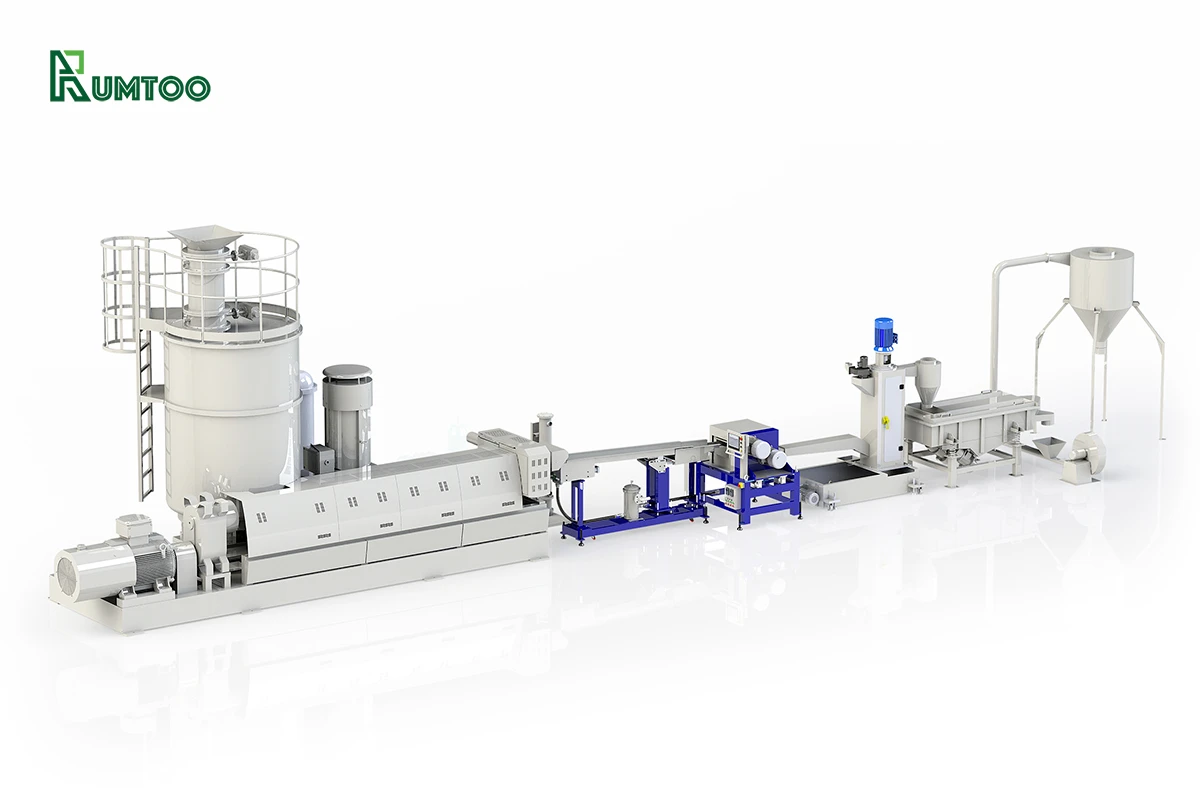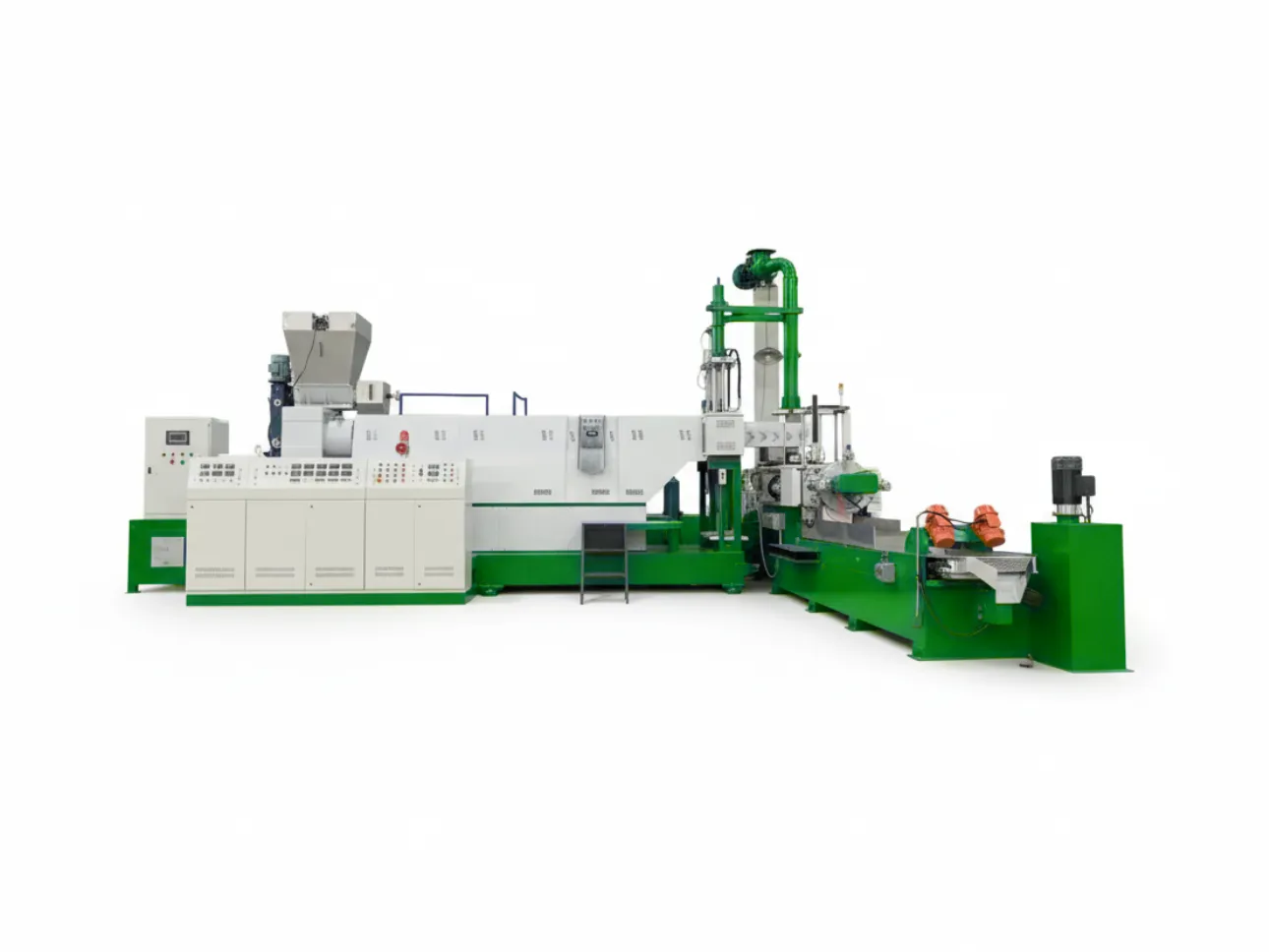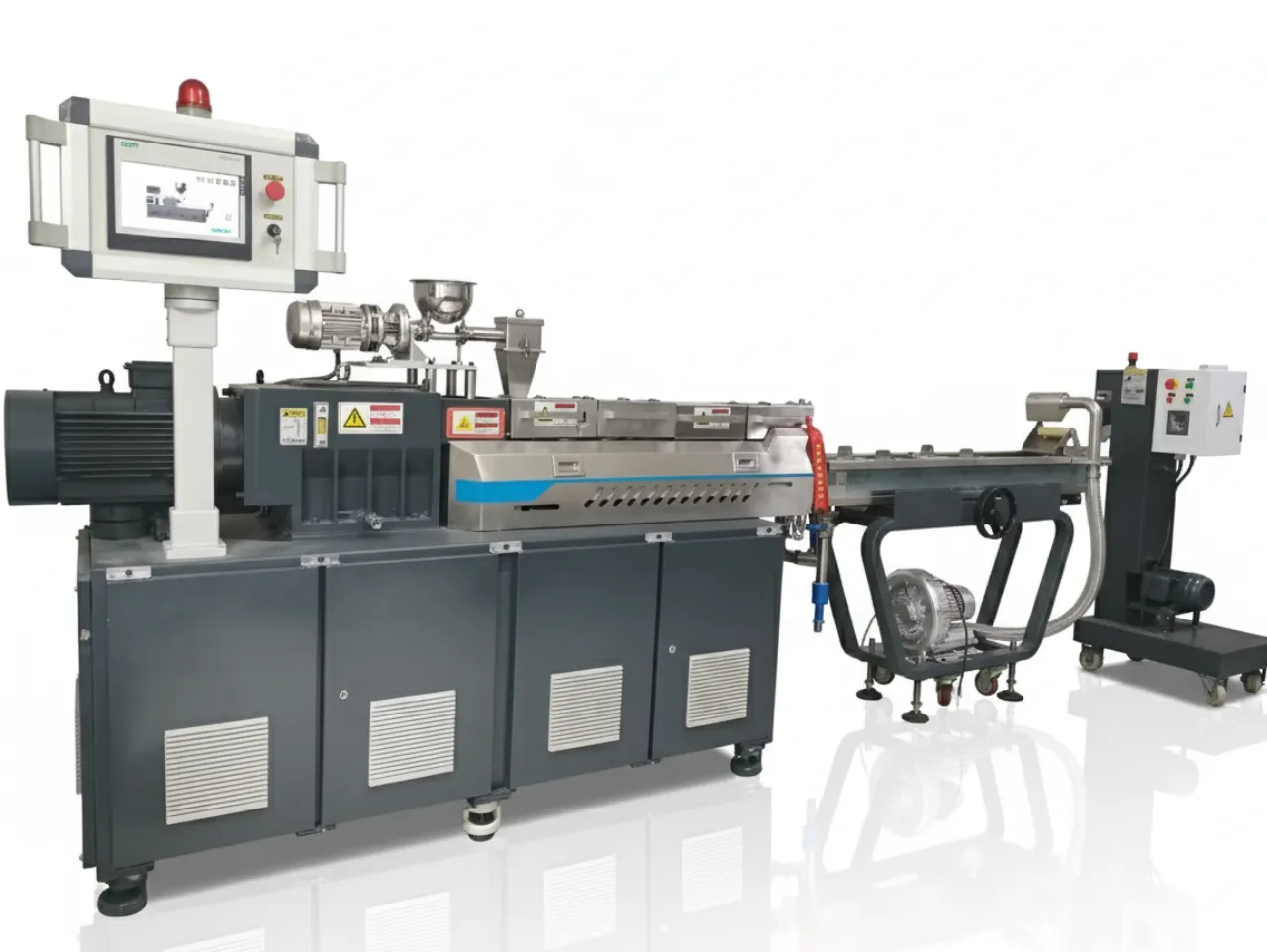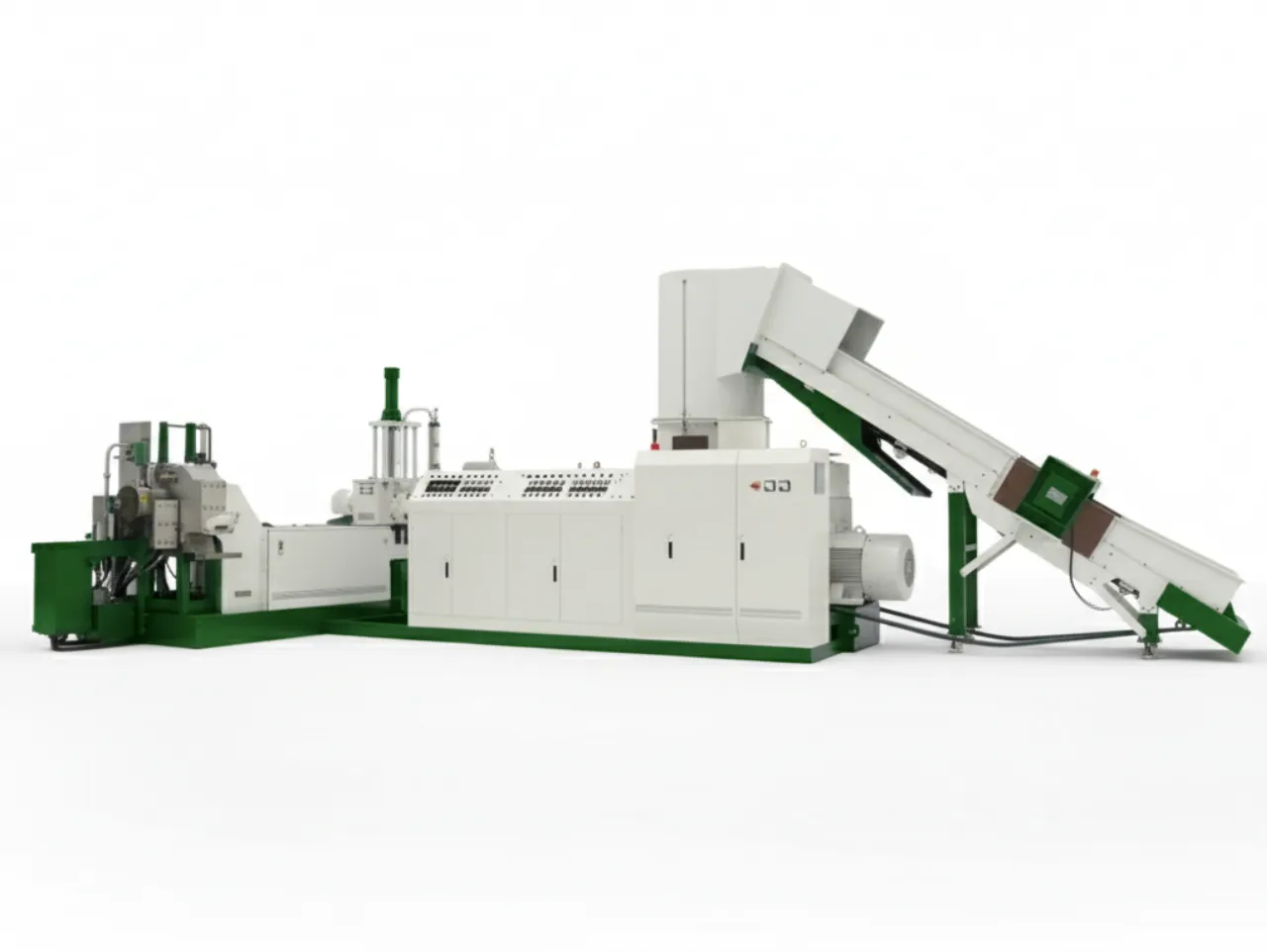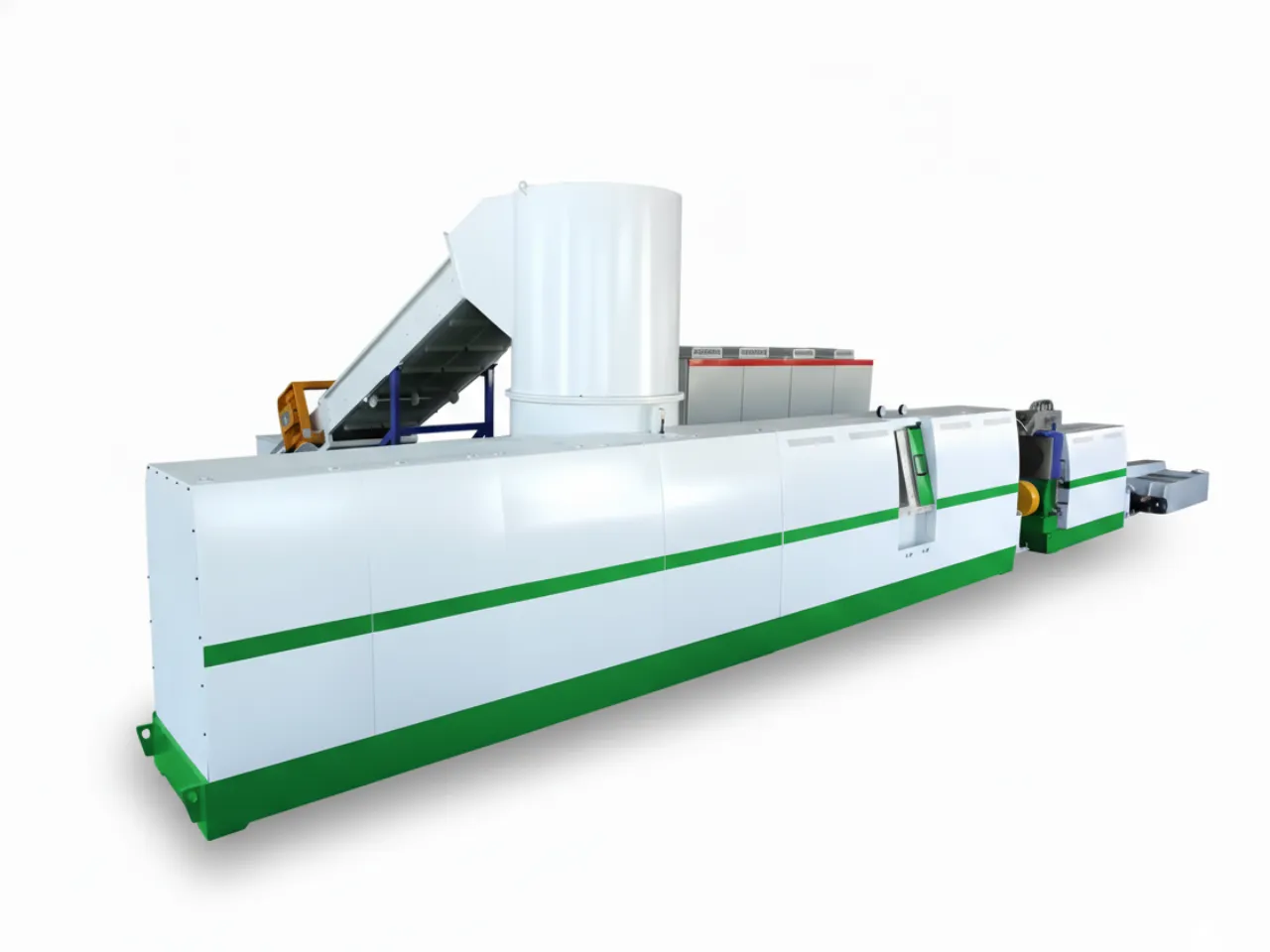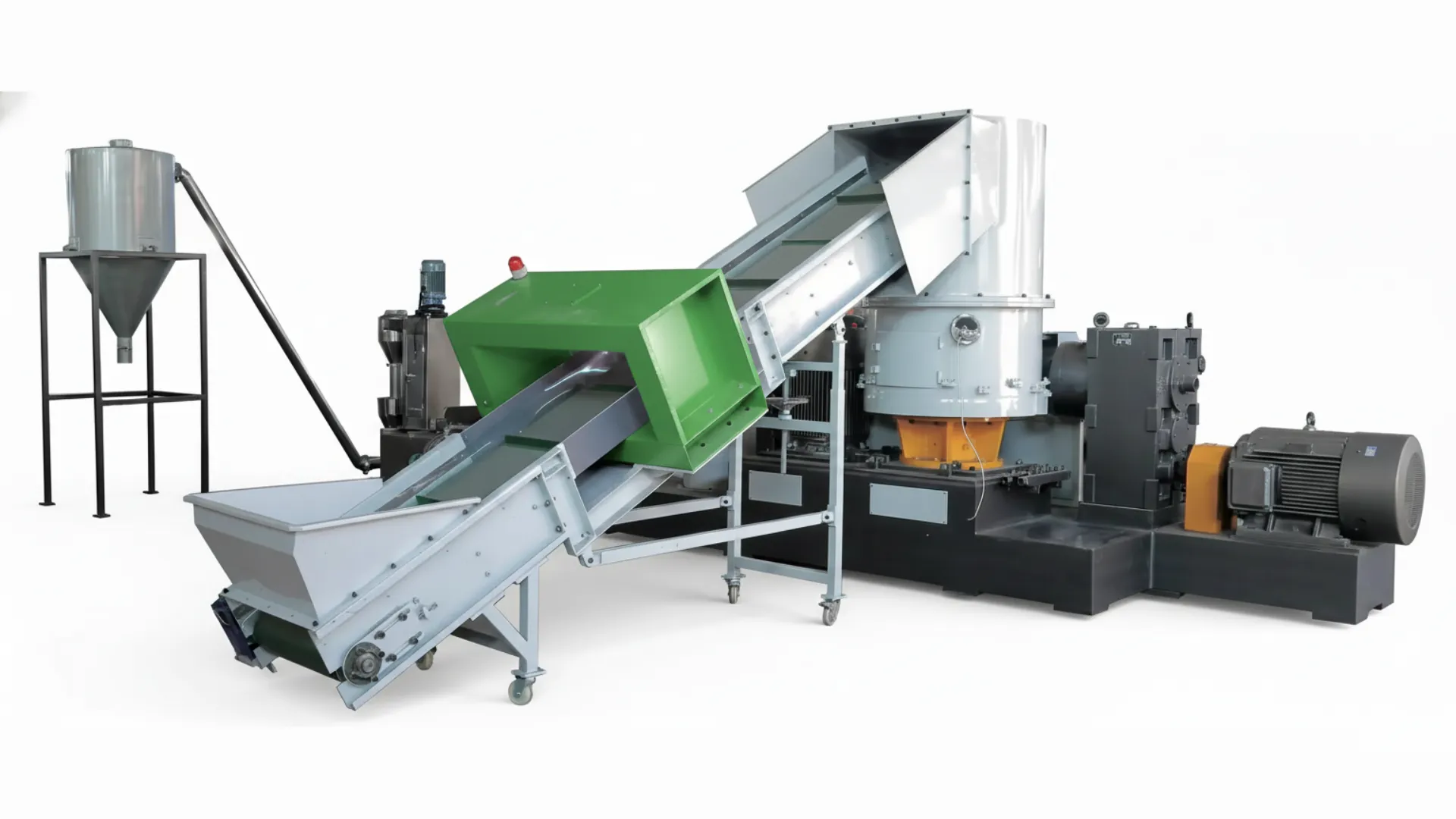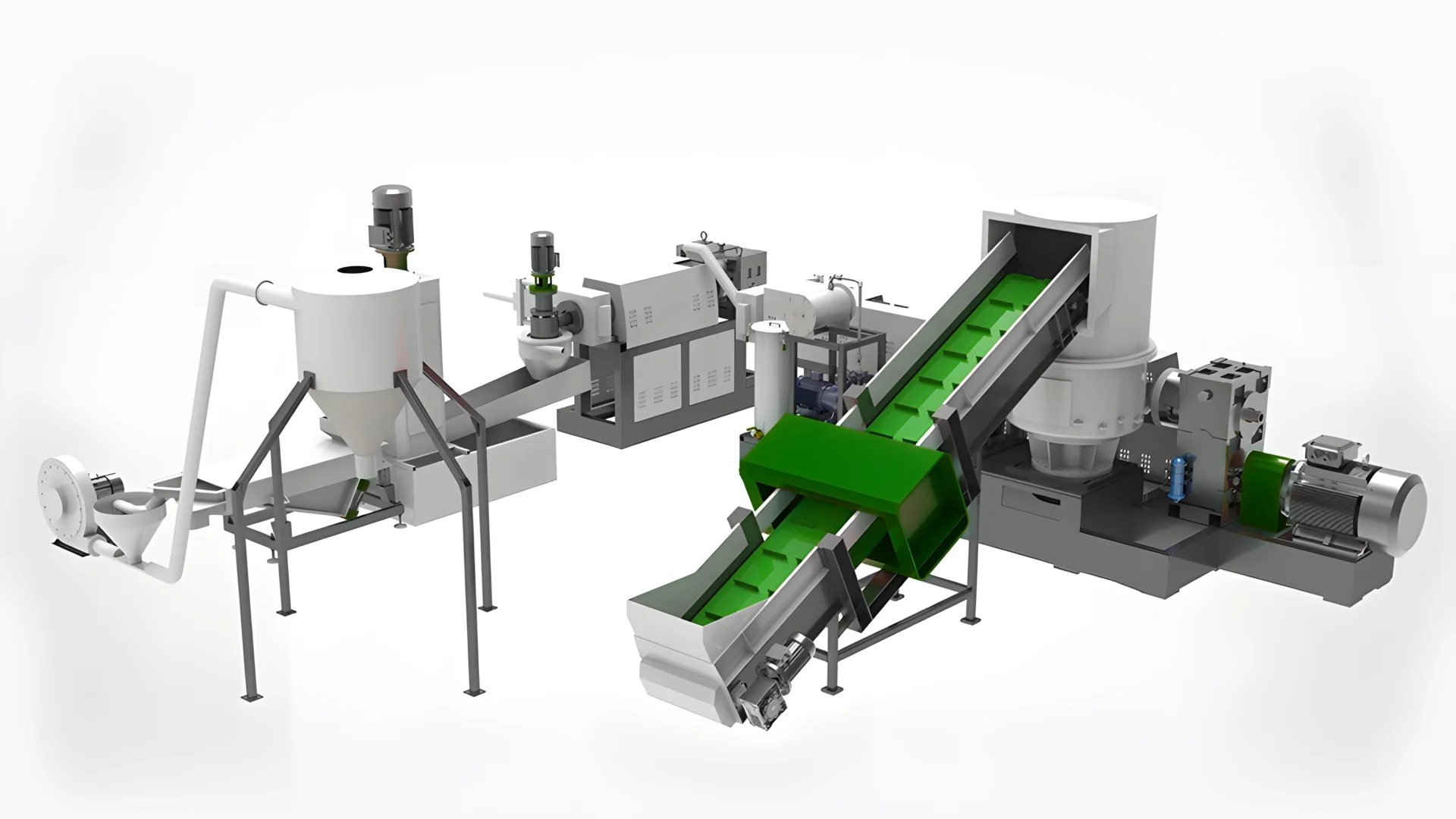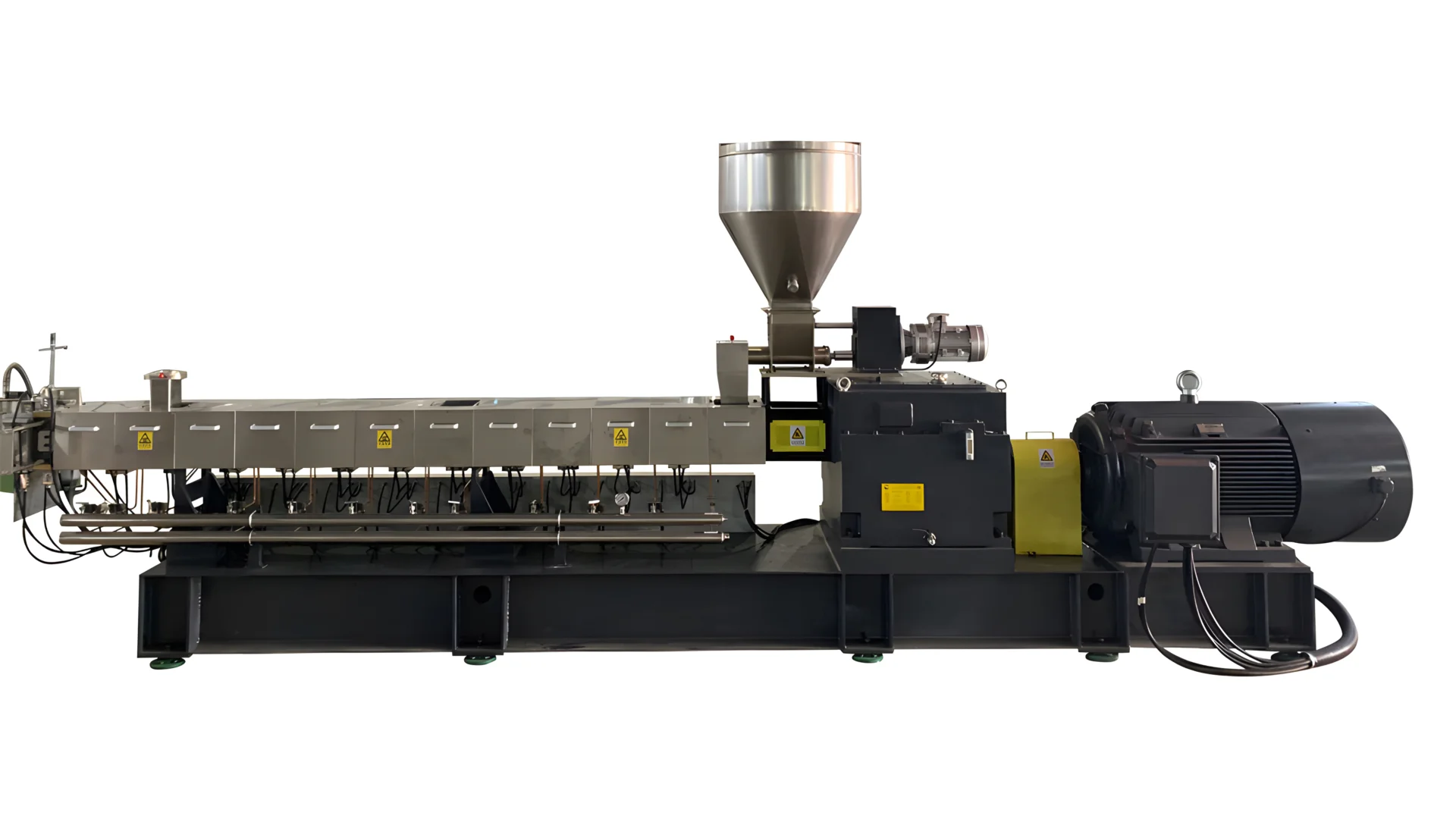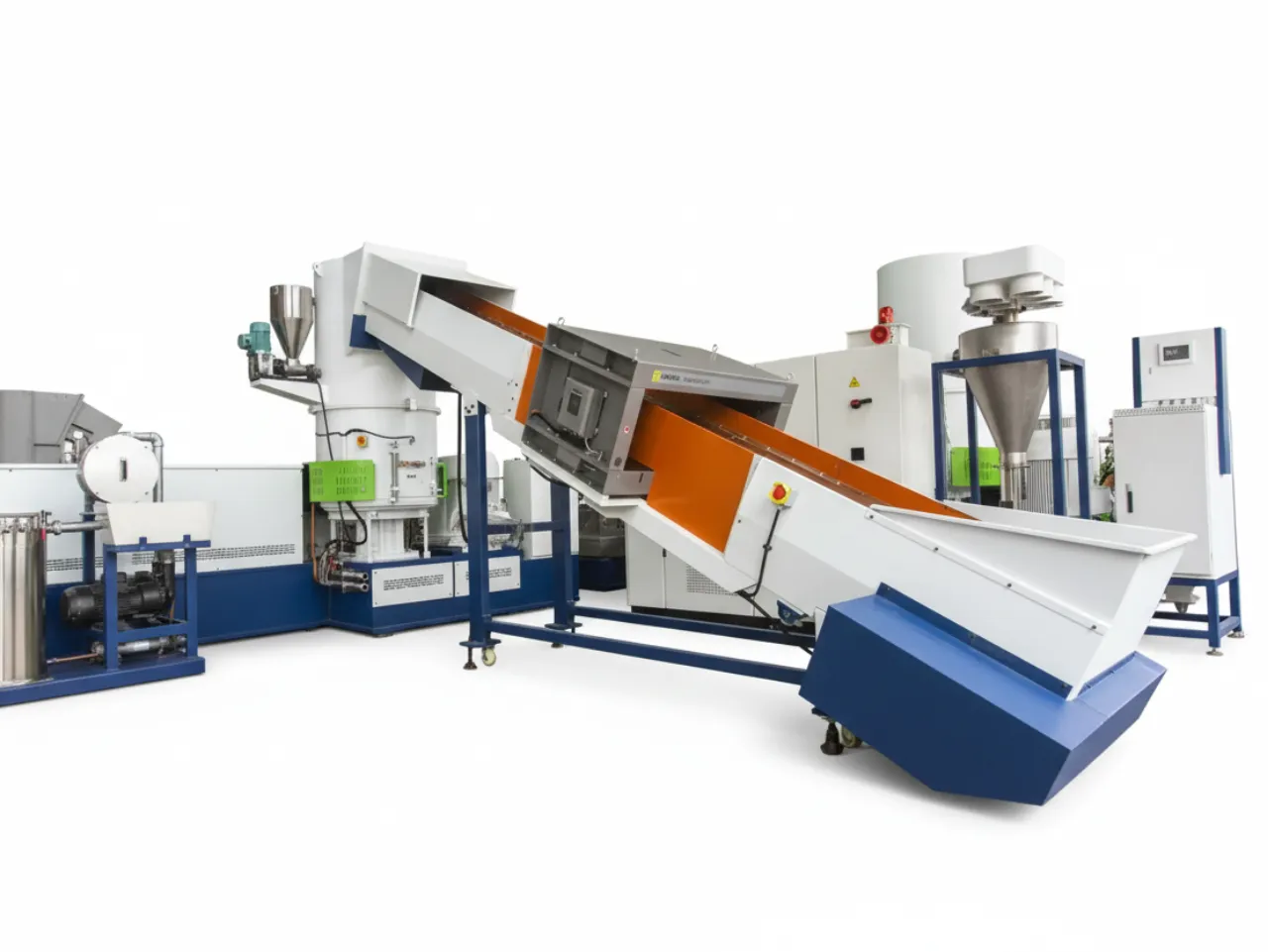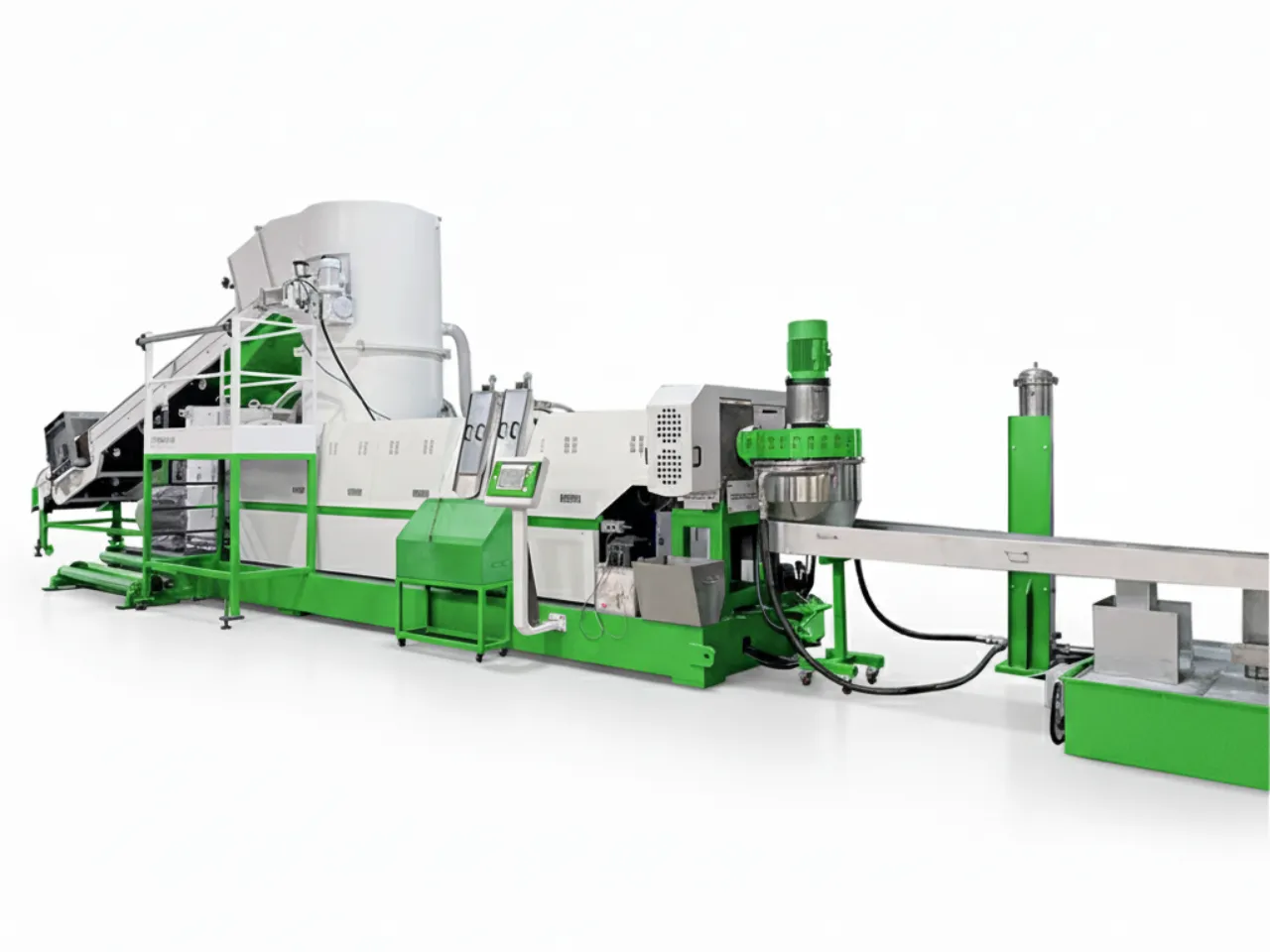High-Performance Plastic Pelletizing Lines for Uniform, High-Value Pellets
Our advanced plastic pelletizing lines are the final step in transforming recycled plastic waste into a valuable, consistent, and reusable raw material. We engineer complete systems for compounding, modifying, and pelletizing a wide range of polymers.
Design Your Pelletizing Line

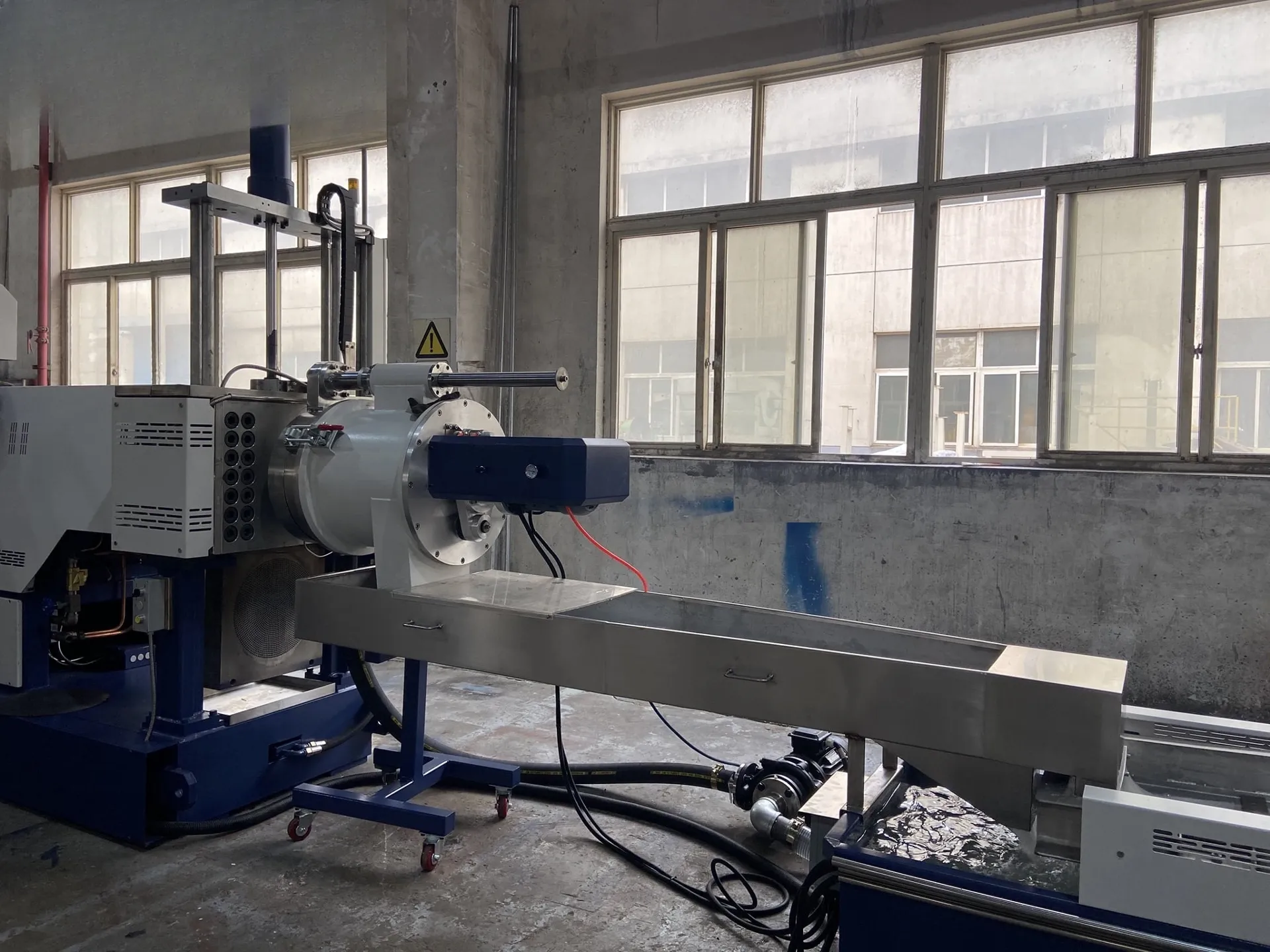
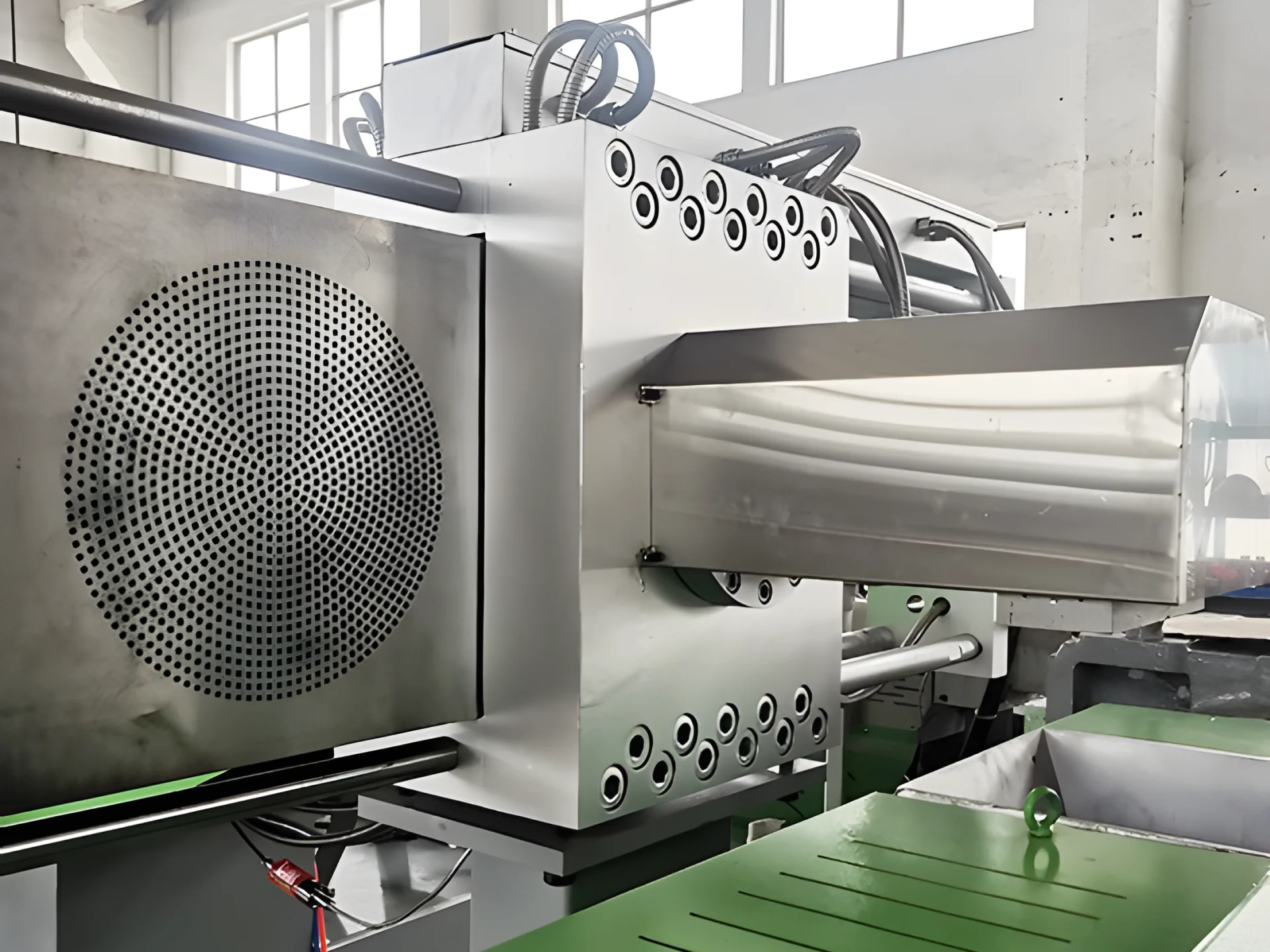
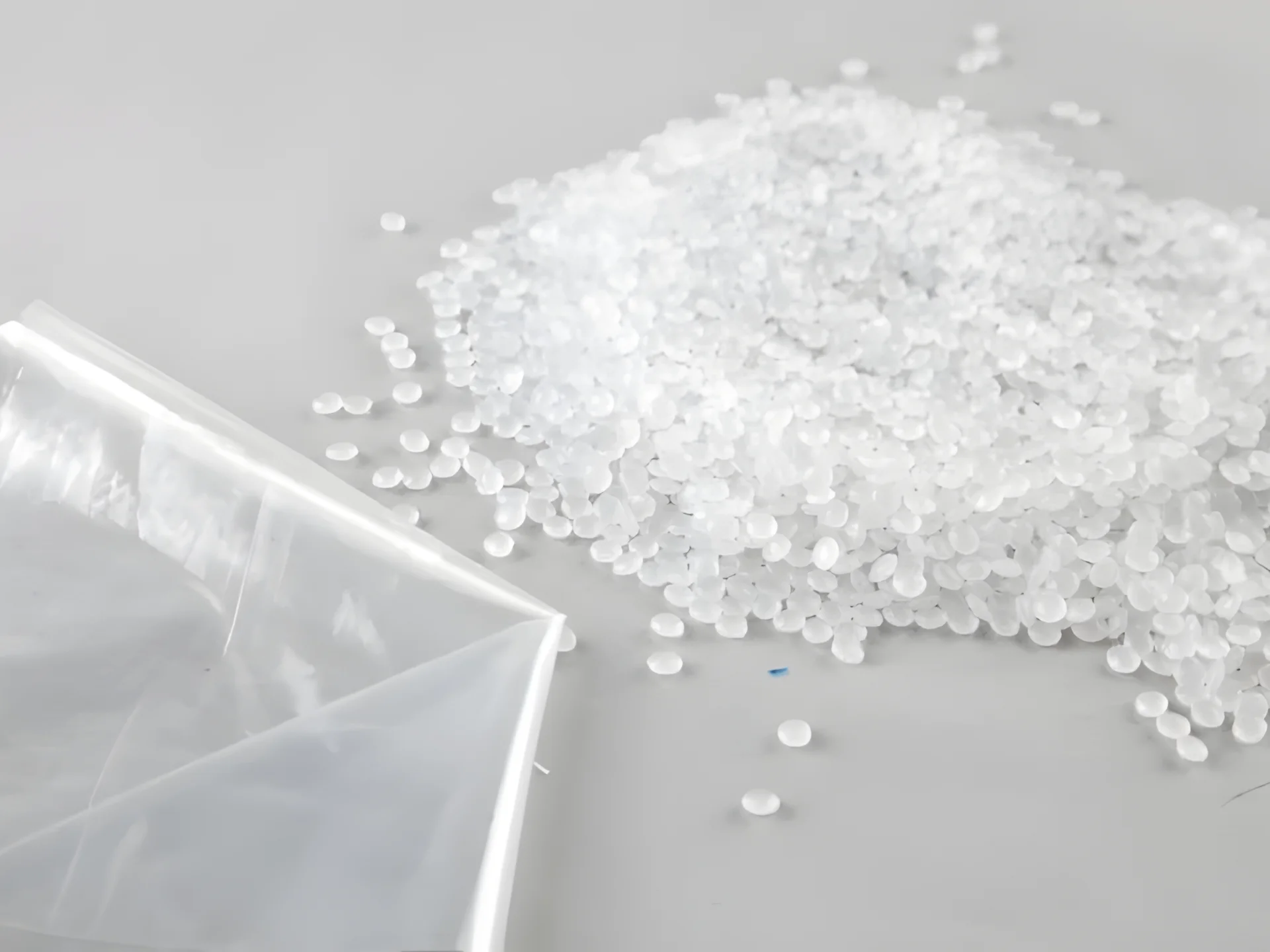
Choosing The Right Pelletizing System
The ideal technology depends on your material type, output requirements, and operational preferences. We specialize in two primary, highly efficient systems.

Water Strand Pelletizing Line
A classic, robust, and cost-effective method ideal for a wide variety of polymers, especially those sensitive to temperature changes.
- Process: Molten plastic is extruded into strands, cooled in a water bath, and then cut into pellets by a granulator.
- Best for: PET, Polystyrene (PS), and highly-filled or reinforced compounds.
- Advantage: Simple operation, easy to clean, and versatile for lab or large-scale production.
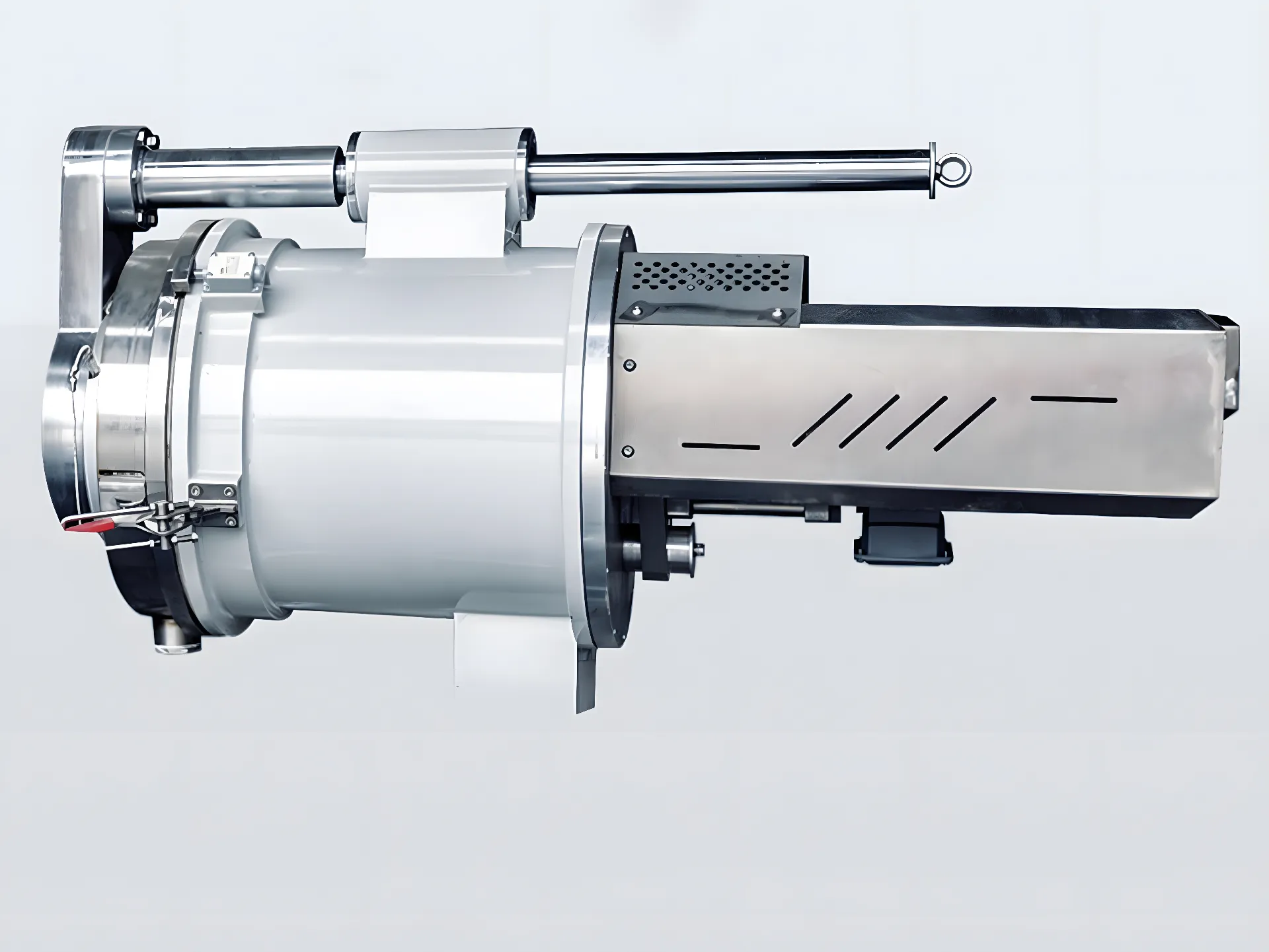
Water-Ring Pelletizing Line
A more automated and compact system that cuts pellets at the die face, ideal for high-volume production of polyolefins.
- Process: Blades rotate at the die face, cutting pellets which are instantly quenched and transported by a circulating water ring.
- Best for: PE, PP, and other materials with lower melt viscosity.
- Advantage: Produces uniform, spherical pellets, requires less floor space, and is highly automated.
From Pain Points to Performance
How our pelletizing systems resolve common production challenges and improve quality, uptime, and cost.
Inconsistent pellet size and high fines
Closed‑loop control of die‑face/strand speed, automatic knife pressure, and post‑classification deliver uniform 3–5 mm pellets and lower dust/rework.
Frequent filter clogging and downtime
Continuous dual‑channel/backflush screen changers with enlarged filtration area extend run time, stabilize melt pressure, and cut scrap events.
Moisture/volatiles causing bubbles and poor surface
Pre‑drying plus vacuum‑vented extruders remove moisture and VOCs; optimized die heating produces a stable melt and glossy pellets.
High kWh/kg and water usage
IE3/IE4 motors with VFDs, energy‑tuned screws, and closed‑loop water circuits reduce specific energy consumption and utility costs.
See Our System in Action
Watch a complete walkthrough of one of our advanced plastic pelletizing lines, from raw material to final, high-quality pellets.
Engineered for Ultimate Pellet Quality
Every component is selected to ensure the purity, consistency, and value of your final product.
-

Continuous Melt Filtration
Automatic screen changers remove contaminants without interrupting production, ensuring a pure melt stream.
-

Efficient Dewatering
A vertical centrifugal dryer rapidly removes surface water from the pellets, preparing them for classification and storage.
-

Pellet Classification
A vibrating screen classifies pellets by size, removing oversized or undersized particles for a highly uniform final product.
-

Strand type cutting system
Water-cooled strands are cleanly cut into uniform pellets with low fines and consistent length.
Achieve Premium Pellet Quality
Our systems produce clean, uniform, and highly marketable pellets from a wide range of input materials.

PE Pellets
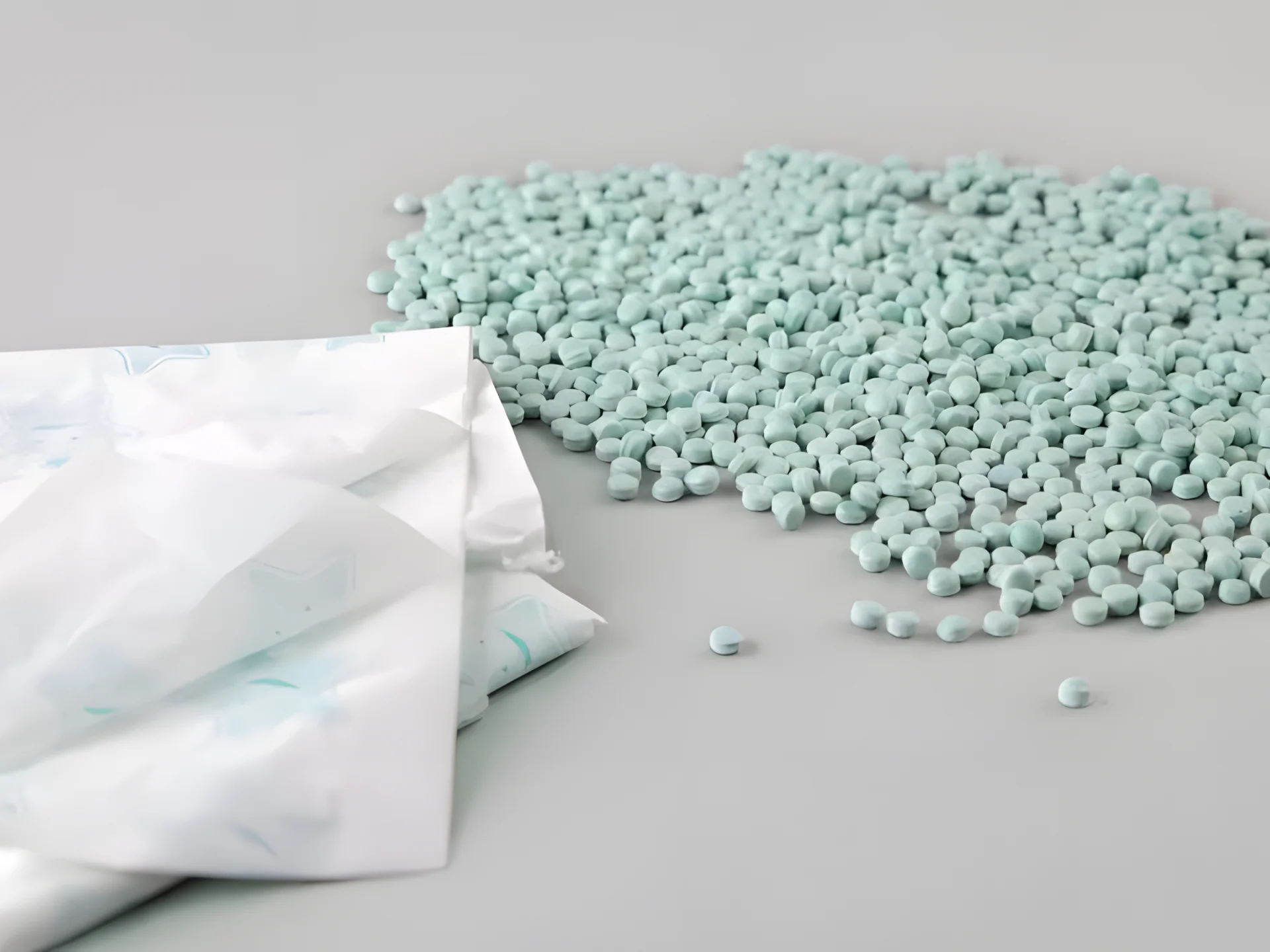
Plastic Film Pellets
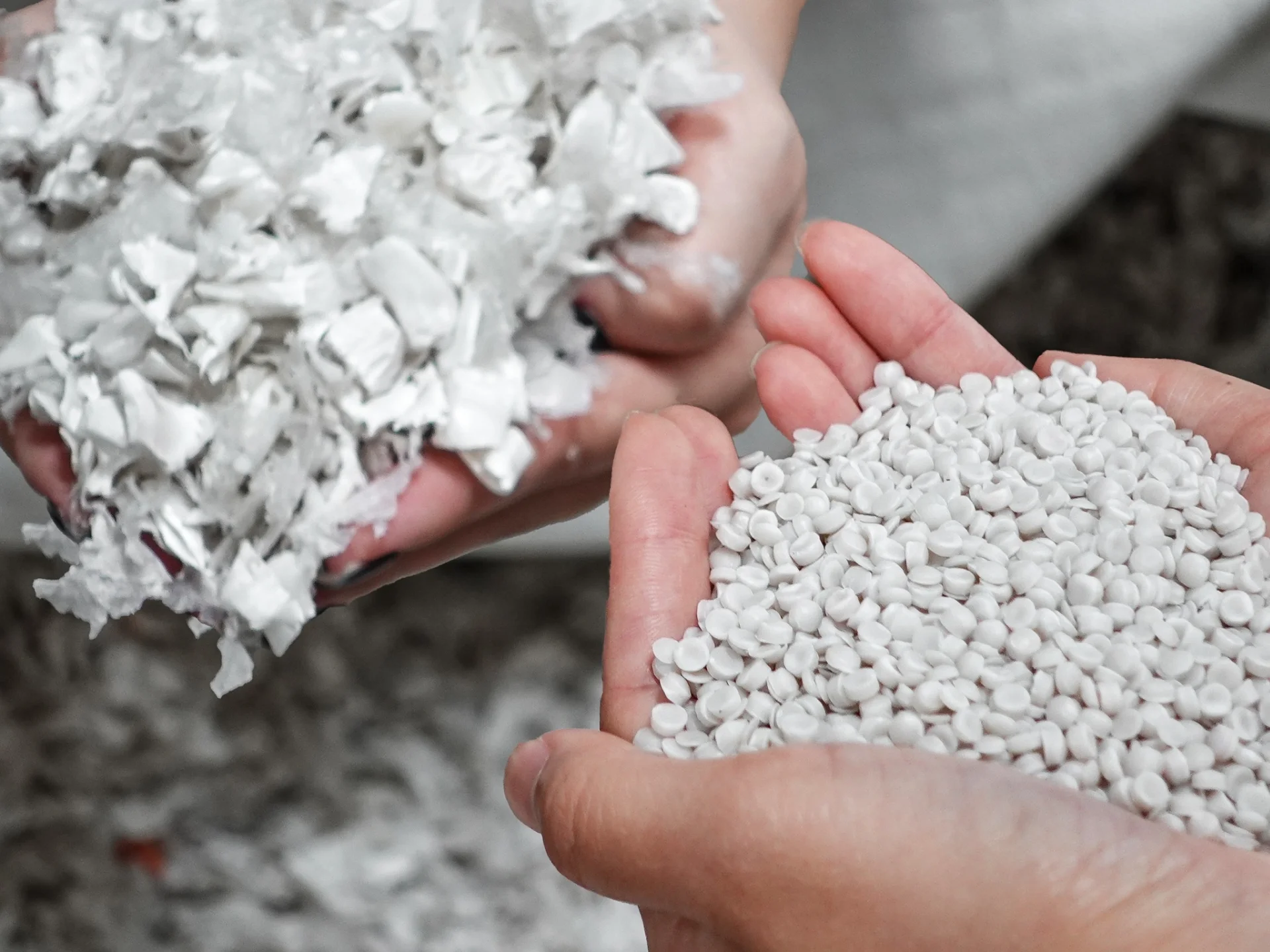
PVC & Hard Plastic Pellets
Technical Specifications
Representative configurations. Custom engineering and options are available on request.
| Machine Model | Auxiliary Equipment | Single Screw Extruder | Capacity (kg/h) | |||
|---|---|---|---|---|---|---|
| Pelletizing Method | Filtering Method | Screw Diameter (mm) | L/D Ratio | Motor Power (kW) | ||
| SJ85–100 | Water strands pelletizing | Plate screen changer | 85 / 100 | 28–33:1 / 10:1 | 55–75 | 100–200 |
| SJ100–120 | Water strands pelletizing | Plate screen changer | 100 / 120 | 28–33:1 / 10:1 | 90–110 | 200–350 |
| SJ130–150 | Water strands pelletizing | Column screen changer | 130 / 150 | 28–33:1 / 10–12:1 | 132–160 | 400–550 |
| SJ150–160 | Water strands pelletizing | Column screen changer | 150 / 160 | 28–33:1 / 12:1 | 185–200 | 500–650 |
| SJ160–180 | Water ring pelletizing | Automatic screen changer | 160 / 180 | 28–33:1 / 12:1 | 220–250 | 700–900 |
| SJ180–200 | Water ring pelletizing | Automatic screen changer | 180 / 200 | 28–33:1 / 12:1 | 280–315 | 900–1200 |
Trusted by Production Teams
Real outcomes reported by customers operating our pelletizing systems.
Pellet quality tightened and dust dropped by about 40%, while throughput rose ~25% after moving to continuous filtration and tuning cutter speed.
Water‑ring pelletizing stabilized PP film regrind across shifts. Specific energy fell by roughly 15% and shift‑to‑shift variability was reduced.
Turnkey delivery and on‑site training were on schedule. Uptime improved with the recommended screen packs and maintenance plan.
Ready to Produce Premium Plastic Pellets?
Contact our experts to discuss your specific material and application. We will design a custom pelletizing or compounding line to meet your goals for quality and throughput.
Get a Custom System QuoteFrequently Asked Questions
Strand pelletizing extrudes molten plastic into strands cooled in water before cutting, while water-ring pelletizing cuts at the die face, producing uniform spherical pellets. The best choice depends on polymer type and production scale.
PET, HDPE, LDPE, PP, PS, EVA, ABS, and filled or reinforced compounds. The systems can process both recycled and virgin materials.
Yes. We provide full pelletizing systems with extruders, filtration, pellet cutting, cooling, and drying, as well as installation and training.
Typical line capacities range from 100 to 2000 kg/h depending on configuration and polymer type.
Single-screw extruders are ideal for re-pelletizing clean polyolefins (PE/PP) with stable melt flow. Twin-screw extruders are preferred for compounding, devolatilization, color masterbatch and formulations with fillers or additives that require intensive mixing and precise dosing.
Options include manual, hydraulic, and continuous screen changers (dual-channel or backflush). Mesh sizes are selected based on contamination level and target pellet quality; we help size filtration to balance purity, pressure stability, and throughput.
Pellet dimensions are governed by die orifice, cutter speed, and strand tension (strand cut) or blade/face speed and die temperature (water-ring). Typical pellets are 3–5 mm. Proper cooling, cutter settings, and post-classification minimize dust and off-size pellets.
Utilities typically include a 3-phase power supply sized to the extruder and auxiliaries, a closed-loop cooling water circuit (or chiller/tower), and compressed air for valves and knife pneumatics. We provide a utilities list with estimated flow rates and connections during proposal.




